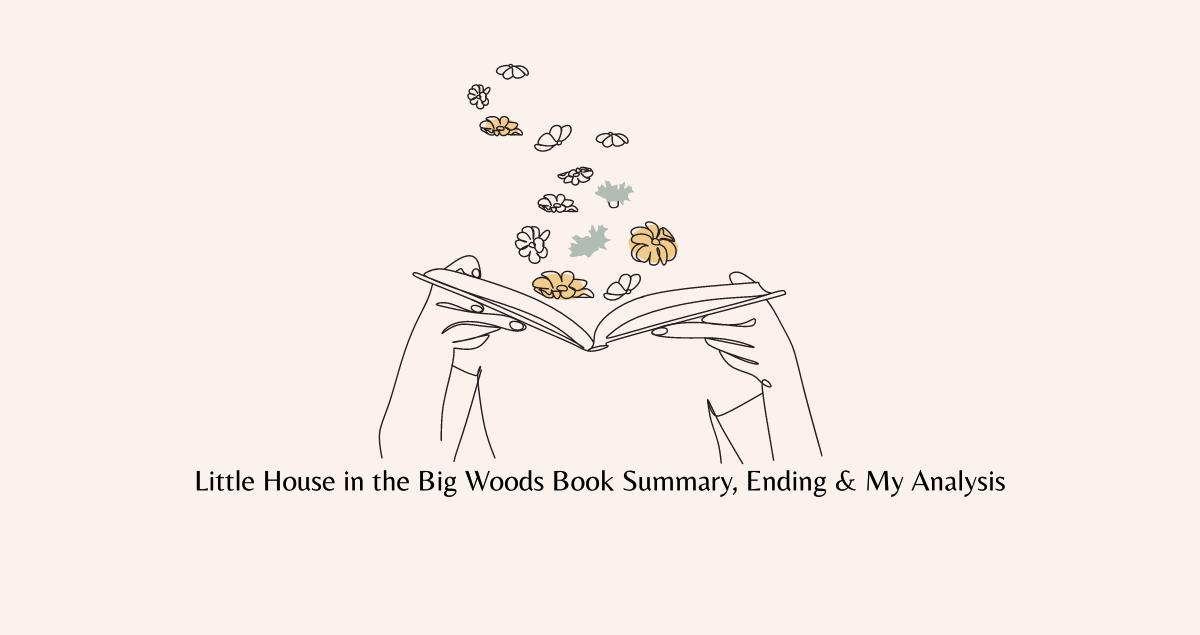Little House In The Big Woods is about the daily life and adventures of the Ingalls family living deep in the Wisconsin woods in the late 19th century. This heartwarming tale offers a glimpse into a simpler time filled with love, hard work, and the beauty of nature.
Table of Content
Little House In The Big Woods Book Summary
The Ingalls family lives in a snug log cabin in the big woods of Wisconsin. They are entirely self-sufficient, and Charles Ingalls hunts for meat and fur. His wife, Caroline, is a skilled homemaker who prepares food, makes butter and cheese, and tends to their three daughters, Mary, Laura, and Carrie.
The family is close-knit, and they celebrate holidays and special occasions together. Each day is filled with chores and simple pleasures. Laura Ingalls, the youngest daughter, is curious about the world around her and often explores the woods with her sisters.
Winter is a time for gathering, and the family works together to prepare for the season. They smoke and dry meat, salt pork, and make sausages. The girls help with chores and are delighted when the first snow falls, signaling the beginning of the holiday season.
The family's cozy Christmas is made special with handmade gifts, songs, and stories. They are a true example of contentment with the simple things in life. As winter deepens, they are snowed in, and Charles entertains them with his fiddle.
Spring brings new life and the chance to explore the woods. Laura and Mary are captivated by the blooming flowers and the wild animals. The family plants a vegetable garden and tends to their animals, including cows and pigs.
Summer is a time of abundance. The family makes hay, picks berries, and preserves food for the winter. They also enjoy visits from their neighbors, the Wilders. The days are long and filled with hard work, but the family bonds over their labor.
As fall approaches, the Ingalls family begins to prepare for the cold months ahead. They harvest their crops and stockpile food. They also hunt and dry venison for winter. The girls help with the work and enjoy the changing colors of the leaves.
Little House In The Big Woods is a beautiful tribute to family life, hard work, and the rhythm of the seasons. It highlights the resilience and spirit of the Ingalls family, who find joy in the simple things despite their isolation from the modern world.
The book provides a charming and detailed look at pioneer life, offering a snapshot of a bygone era when resourcefulness and community were paramount.
Each chapter reads as a standalone story, yet they all weave together to create a rich tapestry of the Ingalls' life. The book captures the innocence of childhood and the deep love within the family unit.
From the thrill of a sugar snow to the excitement of a holiday, the story is peppered with little moments that speak to the heart. The detailed descriptions of food, clothing, and daily tasks paint a vivid picture of the family's world.
The story does not shy away from the harshness of pioneer life, but it is ultimately a tale of love and warmth. It offers a reminder of the simple pleasures that can be found in nature and in the company of those we hold dear.
Little House In The Big Woods is not just a story; it is a journey that invites us to reflect on our own lives and the values that truly matter. It is a testament to the strength of the human spirit and the enduring power of family.
Little House In The Big Woods Quotes
- Home is the nicest word there is.

- There are no great limits to growth because there are no limits of human intelligence, imagination, and wonder.

Little House In The Big Woods Ending Explained
At the end of Little House In The Big Woods, the family has successfully completed another year of living off the land.
Winter arrives once again, and the Ingalls family is well-prepared. They have enough food to last through the cold months, and the warmth of their small home and the love they share sustains them.
The book closes with a sense of contentment, highlighting the enduring strength of familial bonds and the joy found in the simple life they lead. It is a heartwarming conclusion that leaves readers with a deep appreciation for the Ingalls' way of life.
Characters in book Little House In The Big Woods
- Laura Ingalls: A spunky, adventurous young girl and the protagonist of the story.
- Mary Ingalls: Laura's gentle, kind older sister who goes blind from an illness.
- Caroline Ingalls: The girls' mother, a loving and hardworking homemaker.
- Charles Ingalls: The girls' father, a resourceful and caring man who provides for his family as a hunter and farmer.
- Baby Carrie: The youngest Ingalls child, who is often the center of attention.
- Grandma and Grandpa Ingalls: Charles's parents who live nearby in the woods.
- Uncle Henry: Charles's brother who comes to visit from time to time.
- Aunt Polly: Uncle Henry's wife who also makes periodic appearances.
Key Lessons
- Embrace Simplicity: Finding joy in life's simple pleasures can lead to a more fulfilling and content existence.
- Hard Work Pays Off: The rewards of labor are sweet, and the effort put into daily tasks can result in a sense of accomplishment and self-sufficiency.
- Family is Everything: The love and support of family members are the most precious gifts one can have, and they can sustain through even the most difficult times.
- Respect Nature: Understanding and living in harmony with the natural world brings both practical benefits and a deeper respect for the environment.
- Learn from History: Reflecting on the way people lived in the past can provide valuable insights and appreciation for the progress made in modern times.
My Personal Opinion
Is Little House In The Big Woods worth reading? Totally! I found it to be a charming tale that offers a delightful escape into a world of simplicity and deep family bonds.
I loved the detailed descriptions of pioneer life, which brought to life a bygone era with such vividness. However, I did find the book's pace to be slow at times. The focus on day-to-day activities, while authentic, occasionally lacked a strong narrative push.
I would recommend this book to anyone who enjoys historical or family-themed literature. It's particularly well-suited for young readers, offering both educational value and heartwarming storytelling that can be enjoyed by all ages.

